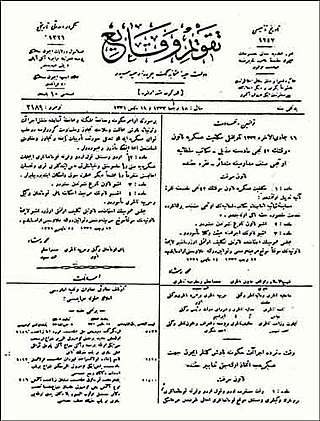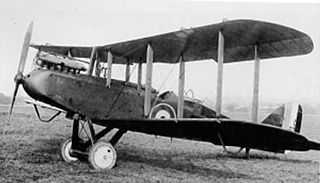| DH44100 | |||||||||||||
|---|---|---|---|---|---|---|---|---|---|---|---|---|---|
| |||||||||||||
| |||||||||||||
| |||||||||||||
| |||||||||||||
DH44100 was a series of six diesel-hydraulic shunters bought by the Turkish State Railways from Maschinenbau Kiel in 1955. The units were very close to the DB Class V 65 used by Deutsche Bundesbahn.
| DH44100 | |||||||||||||
|---|---|---|---|---|---|---|---|---|---|---|---|---|---|
| |||||||||||||
| |||||||||||||
| |||||||||||||
| |||||||||||||
DH44100 was a series of six diesel-hydraulic shunters bought by the Turkish State Railways from Maschinenbau Kiel in 1955. The units were very close to the DB Class V 65 used by Deutsche Bundesbahn.

In signal processing, the Nyquist frequency, named after Harry Nyquist, is a characteristic of a sampler, which converts a continuous function or signal into a discrete sequence. For a given sampling rate, the Nyquist frequency (cycles per second) is the frequency whose cycle-length is twice the interval between samples, thus 0.5 cycle/sample. For example, audio CDs have a sampling rate of 44100 samples/second. At 0.5 cycle/sample, the corresponding Nyquist frequency is 22050 cycles/second (Hz). Conversely, the Nyquist rate for sampling a 22050 Hz signal is 44100 samples/second.

The de Havilland DH.89 Dragon Rapide is a 1930s short-haul biplane airliner developed and produced by British aircraft company de Havilland. Capable of accommodating 6–8 passengers, it proved an economical and durable craft, despite its outdated plywood construction.
Sound eXchange (SoX) is a cross-platform audio editing software. It has a command-line interface, and is written in standard C. It is free software, licensed under GPL-2.0-or-later, with libsox licensed under LGPL-2.1-or-later, and distributed by Chris Bagwell through SourceForge.

The Airco DH.4 is a British two-seat biplane day bomber of the First World War. It was designed by Geoffrey de Havilland for Airco, and was the first British two-seat light day-bomber capable of defending itself.

The de Havilland DH.84 Dragon is a successful small commercial aircraft that was designed and built by the de Havilland company.

The Temporary Law of Deportation, also known as the Tehcir Law, or officially by the Republic of Turkey, the "Sevk ve İskân Kanunu" was a law passed by the Ottoman Council of Ministers on May 27, of 1915 authorizing the deportation of the Ottoman Empire's Armenian population. The resettlement campaign resulted in the deaths of anywhere between 800,000 and over 1,500,000 civilians, in what is commonly referred to as the Armenian genocide. The bill was officially enacted on June 1, 1915, and expired on February 8, 1916.

The Airco DH.9 – also known after 1920 as the de Havilland DH.9 – is a British single-engined biplane bomber that was developed and deployed during the First World War.

The de Havilland DH.90 Dragonfly is a 1930s British twin-engined luxury touring biplane built by the de Havilland Aircraft Company at Hatfield Aerodrome.

TCDD DH 7000 are a type of diesel-hydraulic locomotive built for operations on Turkish State Railways by Tülomsaş. The DH7000 was primarily used as a shunter. A total of 20 units were delivered from 1994.

TCDD DH9500 is a diesel-hydraulic locomotive operated by the Turkish State Railways (TCDD). A total of 26 units were delivered from 1999 by Tülomsaş. They are a hydraulic derivative of DE11000 delivered in the 1980s.

TCDD DH33100 were diesel-hydraulic locomotive built for shunting operations on the Turkish State Railways. 38 units from Maschinenbau Kiel (MaK) were built starting in 1953 and another 25 were built by TCDD in Turkey. In 1980–81 the shunters were rebuilt with Cummins Diesel KT1150L engines.
DH3600 were diesel-hydraulic locomotive built for shunting operations on the Turkish State Railways. 38 units were built by Tüvasaş under licence from Maschinenbau Kiel (MaK). In 1980-81 the shunters were rebuilt with Cummins Diesel KT1150L engines.
TCDD DH4100 was a single diesel-hydraulic shunter built for the Turkish State Railways by Jenbacher based on Jenbacher DH400C.
TCDD DH6000 was a single diesel-hydraulic shunter built for the Turkish State Railways by Jenbacher based on Jenbacher DH600C.
TCDD DH6500 was a series of diesel-hydraulic shunter built for the Turkish State Railways. A total of 40 locomotives were built by Krupp-Esslingen after 1960, based closely on DB Class 360. They were equipped with Maybach GT6 engines.
DH11500 was a series of 15 diesel-hydraulic shunter bought by the Turkish State Railways from Deutsche Bundesbahn in 1982. The units were all DB Class 211 built by Maschinenbau Kiel. Some units still remain in service with TCDD.
DH27000 was a series of three diesel-hydraulic locomotives bought by the Turkish State Railways from Krauss-Maffei in 1960 as a possible alternative to the American DE21500. Though performance was good, TCDD chose to buy the General Electric models, possibly due to better financing model for the latter.
Kanagale is a village in the southern state of Karnataka, India. It is located in the Hukeri taluk of Belgaum district in Karnataka.

The Circassians in Kosovo were a group of the Circassian people who lived in Kosovo beginning in the mid-19th century, when they were exiled during the Circassian genocide to the Ottoman Empire after the Russo-Circassian War. During this time, the Circassians in Kosovo were from three of the twelve Adyghe tribes: the Abzakh, Shapsug and Ubykh. In 1998 they numbered 200.
A constant timbre at a constant pitch is characterized by a spectrum. Along a piece of music, the spectrum measured within a narrow time window varies with the melody and the possible effects of instruments. Therefore, it may seem paradoxical that a constant spectrum can be perceived as a melody rather than a stamp.